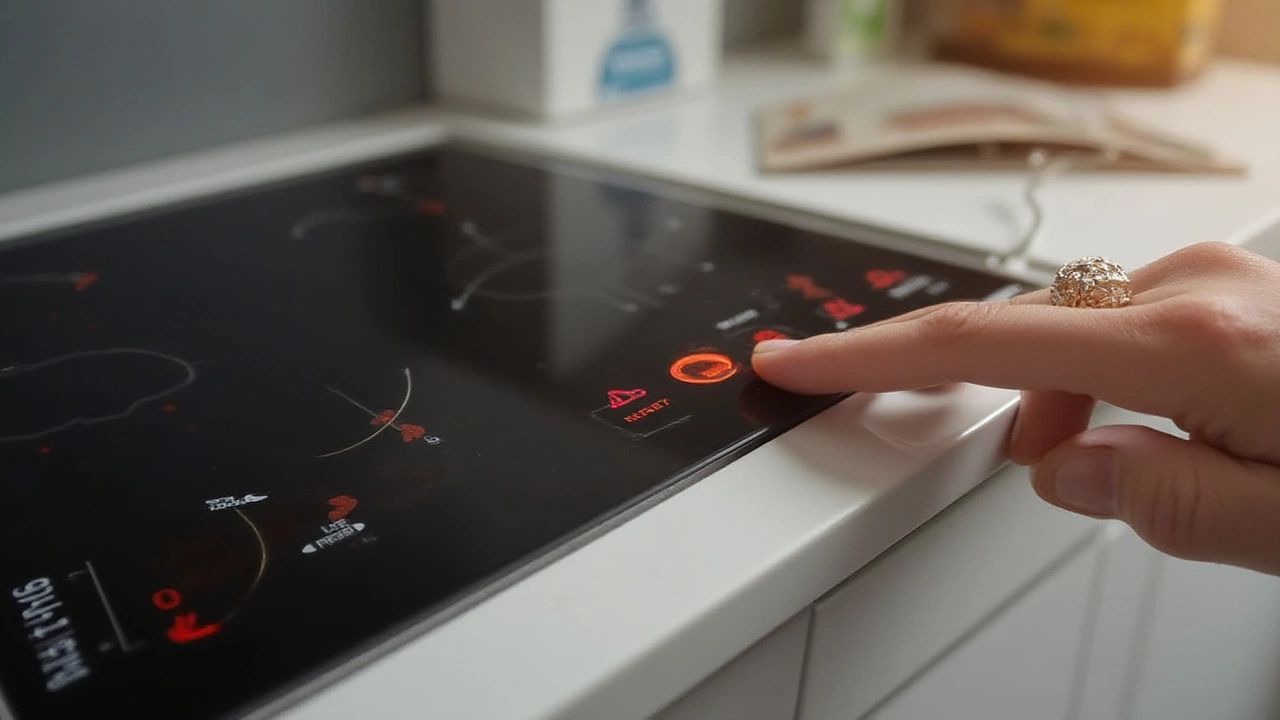Nothing messes up dinner plans like an electric hob that just won’t cooperate. One minute, you’re boiling pasta; the next, your hob goes dark, flashes an error, or acts strangely. Here’s the thing: most people don’t realize electric hobs are designed with built-in protection. If anything's off, they lock down to prevent bigger problems. Resetting your electric hob can solve more issues than you’d think, from glitchy controls to heating elements that refuse to turn on. But before you get your toolbox out or call for pricey repairs, let’s break down how this process actually works, why resets matter, and what you’ll need to watch out for so your kitchen stays the heart of the home—not the hotbed of frustration.
Why Your Electric Hob Needs Resetting
Think of your electric hob as the nerve center of your cooker top—it’s full of sensors, safety cutoffs, and computer chips working together. There’s a reason why sometimes it needs a reset. Power surges are more common than people expect, especially in older houses or apartment blocks. Even a momentary outage can scramble a hob’s tiny computer (the control board), leading to weird error codes, blinking displays, or a complete freeze. You’d be surprised how sensitive modern appliances are: some will lock up if a pan boils over and moisture gets under the touch controls, others react to power flickers like a cat to a cucumber. Resetting clears the board, wipes any non-critical codes, and tells your hob to start fresh.
What triggers the need for a reset? Here are some of the most common triggers:
- Power cuts or brownouts in your home
- Fluctuations in voltage—like turning on a heavy appliance nearby
- Moisture or spillage entering the touch or button panel
- Random software bugs
- Activating too many safety features at once (like child lock, overheat protection, or residual heat indicators)
On top of that, the stats back it up—data from appliance repair companies in the UK shows that around 41% of electric hob service calls are solved by a simple power reset, no parts needed. Now, that’s a time and money saver worth knowing.
How to Safely Reset Your Electric Hob
First thing, safety. Electric hobs don’t mess around with high voltages and capacitors that store current. Always unplug the unit or turn off the circuit breaker—never just poke around the controls. For most standalone or built-in hobs, look for a dedicated switch nearby or turn off the kitchen’s cooker supply at the main panel. Here’s a step-by-step walkthrough you can trust:
- Turn Off the Hob: Make sure all controls are in the "off" position. If it’s a touch-control model, verify every zone is off.
- Disconnect From Power: If your hob plugs into a wall, unplug it. Most built-in hobs are hardwired; in that case, turn off the hob’s circuit breaker at your mains panel.
- Wait: Don’t just cut power and flick it back on. Leave the hob disconnected for at least 60 seconds. Some manufacturers recommend waiting up to 5 minutes—this allows every capacitor and microchip to fully discharge and reset.
- Restore Power: Plug the hob back in or switch the breaker to “on”. The controls should run through a self-test or show the time or welcome screen.
- Check for Error Codes: If an error comes up now, jot it down. Many manufacturer websites list common codes, so check your manual or go online.
- Test Each Zone: Turn each hob zone on briefly at low heat to confirm they all work and no further errors appear.
Handy tip: If your model has a physical reset button (often hidden under the control panel or inside the user-accessible side of the unit), press and hold it for 10 seconds after restoring power. Not all brands include this, but Bosch, AEG, and some Samsung models do.
Here’s a quick table showing reset times recommended by popular brands:
| Brand | Recommended Power-Off Wait | Reset Button? |
|---|---|---|
| Bosch | 60 seconds | Yes (hidden) |
| Neff | 90 seconds | Usually no |
| Indesit | 5 minutes | No |
| Samsung | 2 minutes | Yes (panel back) |
| AEG | 60 seconds | Yes |
| Zanussi | 1 minute | No |
Don’t forget: the most important reset electric hob step is patience. Rushing the power cycle sidesteps the full reset and leaves you stuck in a loop.

Troubleshooting After a Reset
So, what if a reset doesn’t fix the issue? About one in four electric hobs refuse to budge after a reset—and there are a few key reasons for that. Some faults are “hard errors” like a failed sensor, a blown fuse inside the electronics, or a damaged circuit track. Others are stubborn software bugs, often linked to models with more advanced features like WiFi, induction boost, or multiphase timers.
First, watch the display. Does it show a coded message? Numbers like “E3,” “F2,” or “0c” mean something, and a quick Google or look in your manual cracks the code. If it’s just dead—no lights, sound, or warmth—then the control board or main fuse is probably gone. Don’t keep switching power on and off if nothing changes; this strains the electronics and could make a minor problem worse.
For models with touch controls, moisture or dirt is a sneaky culprit. Wipe down the entire panel with a dry microfiber cloth, double-checking for any sticky spots. Yes, even a faint coffee ring can jam things up. If the hob is stuck in child lock, find the exact button combo in your manual—it’s usually holding two buttons at once for 3–5 seconds, but it varies.
Here are some must-know tips:
- If only one zone isn’t working, it may be a blown element, not a control problem.
- Smelling burning or hearing clicking? Switch it off and call a pro—it’s likely an internal short.
- Frequent resets point to wiring issues or unstable voltage. You’ll need an electrician for this one.
- If resets help but issues keep coming back, your control board may be “dying” slowly—a common issue after about 6–8 years of service.
On the topic of lifespan, check your model year. The average household replaces or majorly repairs an electric hob every 8–10 years, based on UK and European appliance service records. If yours is in this age group and keeps needing attention, a reset is just treading water.
Handy Preventive Tips and When to Call a Pro
You can stretch your hob’s life and keep resets to a minimum by following a few smart habits. Always let spills cool before cleaning, limit power-hungry appliances on the same circuit, and use the child lock if you have kids or pets who love buttons. For built-in models, make sure the ventilation slots aren’t blocked—overheating is a top cause of electronic resets and silent faults.
Want to avoid “phantom touches” and error codes? Try these tricks:
- Never operate your hob with wet hands.
- If you mop the kitchen floor, dry any splash that hits the hob panel immediately.
- Run a full power-off reset after a deep clean or if you notice frequent glitches—think of it as a computer reboot.
- Keep your manual handy. Some brands like Bosch or Neff hide advanced resets via two buttons held down, while others need a service mode unlock sequence. If it’s gone missing, many can be found online.
There are limits, of course. If your reset doesn’t work, or you see burnt spots under the glass, hear loud popping noises, or find error messages that won’t clear even after unplugging, get professional help. UK fire safety stats show that around 13% of kitchen fires are linked to faulty electric cooking appliances—don’t take chances if something seems seriously wrong.
Your electric hob isn’t out to get you. Most problems are fixable with patience, a careful reset, and routine cleaning. Next time things freeze up or misbehave, skip the headache—use these steps and see just how often you can troubleshoot your way back to a hot meal without needing to call anyone. It’s faster than waiting for a repair tech and might just save your evening.
